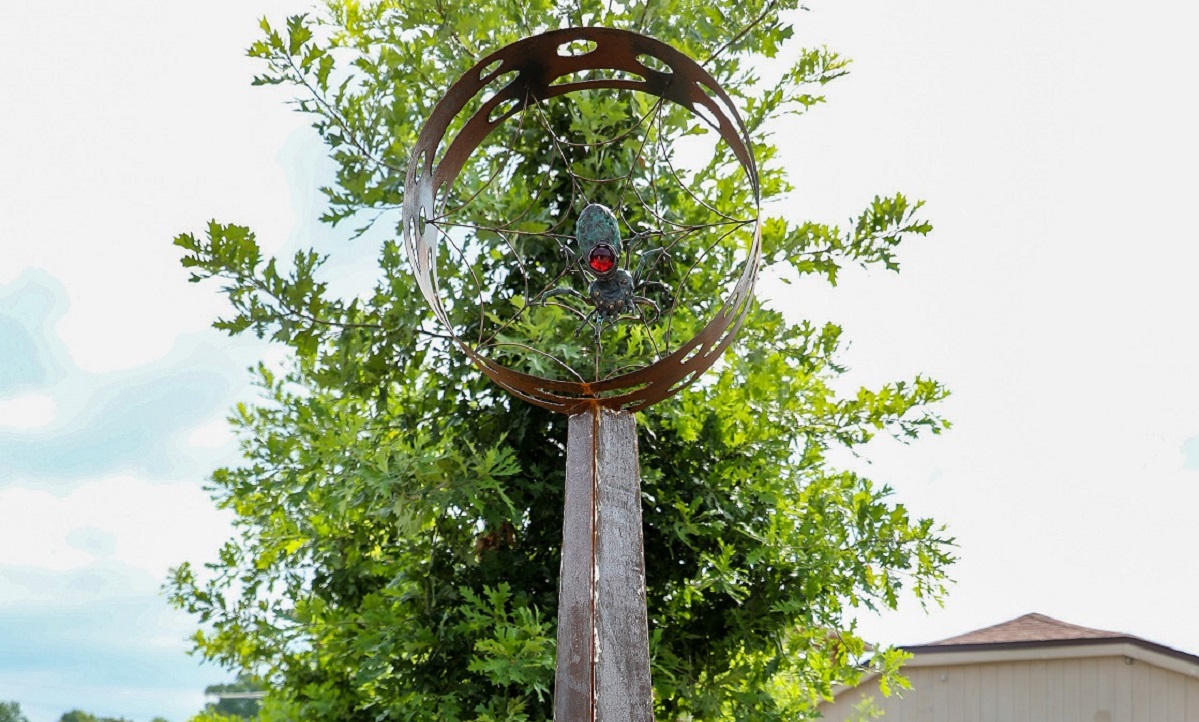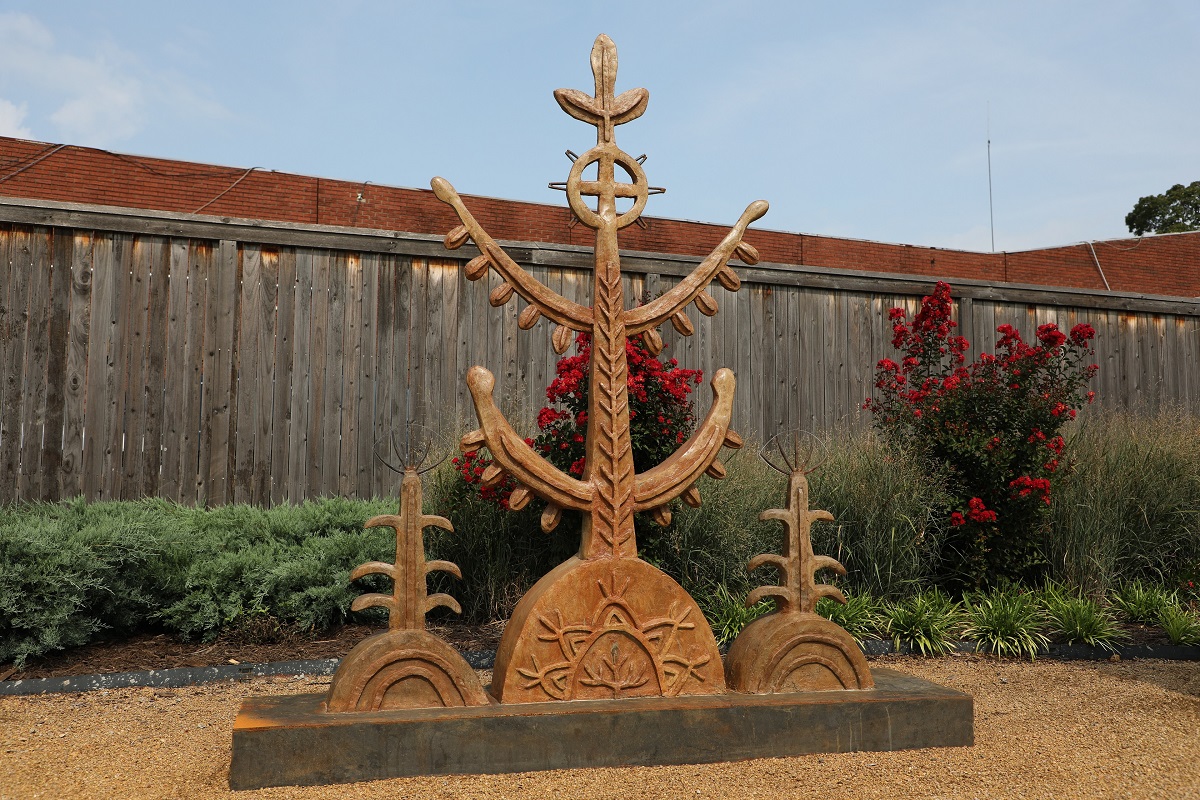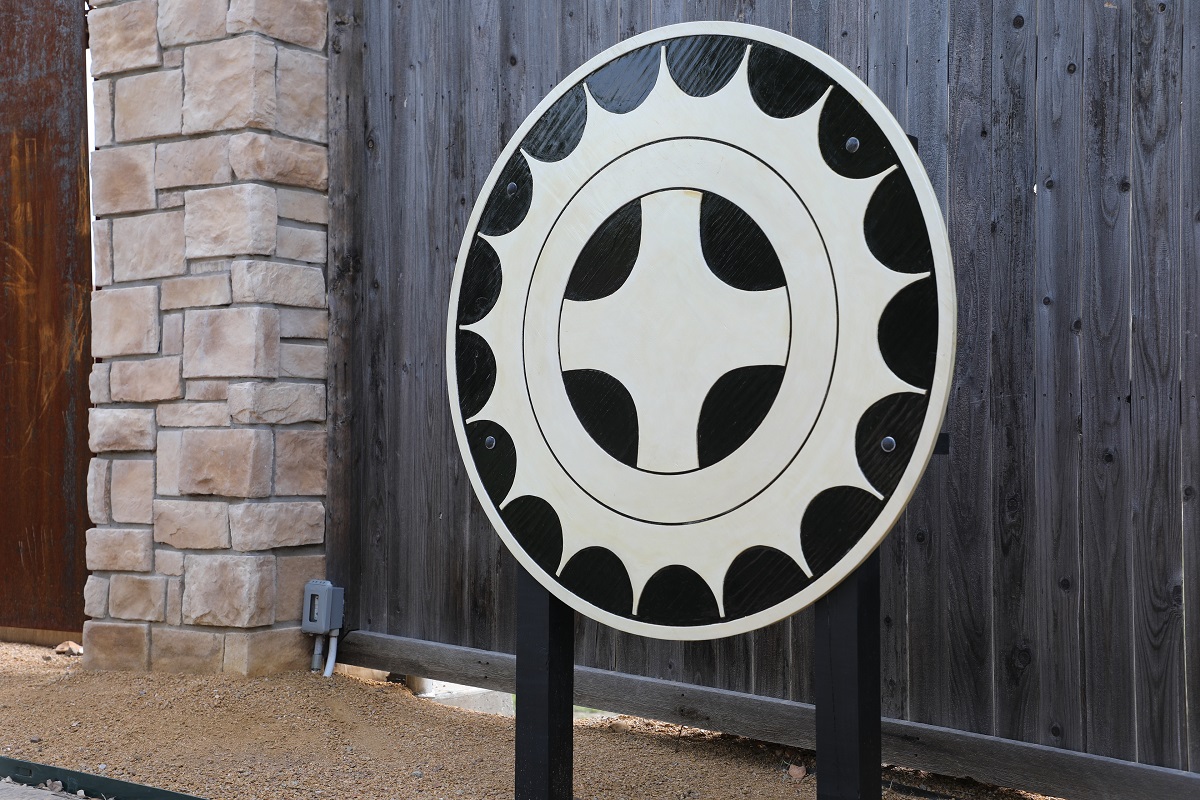TAHLEQUAH, Okla. — Visitors of historic downtown Tahlequah can now enjoy three new large-scale art installations on display at the Cherokee Cultural Pathway. The pathway serves as an immersive walkway connecting the Nation’s downtown museum properties and showcases artwork by Cherokee Nation artists.
The new installations include the works of Cherokee National Treasure David Scott and Cherokee Nation artists Karen Sixkiller and Rebecca Kunz.
“The beauty of Cherokee culture is reflected in every piece that is unveiled on the Cherokee Cultural Pathway,” said Cherokee Nation First Lady January Hoskin. “These works not only honor Cherokee history and values but will inspire the next generation of creators. We are grateful for the artists whose talents breathe life into these amazing works, and I encourage everyone to walk this pathway and feel its power.”
Scott’s “Pathway – Wood Gorget” sculpture stands nearly 5 feet tall and is made of black and stained wood. Gorgets are circular or crescent-shaped plates worn as jewelry or armor. Throughout Cherokee history, gorgets have commonly been made from carved shell, stone and metal. Shell and stone were typical prior to European contact, and metal gorgets were worn by Cherokee leaders associated with the military as gifts from European states in the 1700s.

Sixkiller’s 10-foot-tall “Grandma Spider” sculpture portrays the grandma spider represented in Cherokee culture. The spider, sitting atop a steel, pyramid-shaped beam, is made of bronze and sits in a web. Approaching from any direction, visitors are likely to see an intricate shadow on the ground with a red spot representing the first fire, of which grandma spider brought to the mainland in traditional Cherokee stories.
Kunz’s nearly 9-foot-tall sculpture “Monument to Selu” symbolizes Selu, the first mother who is sometimes called “Corn Mother.” According to oral history, Selu was produced from the first corn plant so that Kantai, the first man, would have a companion. It is said that she took several ears of corn off her birth plant when she left with Kantai and planted them in the spring.

These new, eye-catching installations are on display now at the Cherokee Cultural Pathway and follow the works of Cherokee National Treasure Eddie Morrison and Cherokee Nation artists Tama Roberts and Bryan Waytula that were added last December. Additional installations are expected to be added this year.
As part of its rotating exhibitions, the pathway is currently hosting “Kindra Swafford: Journey Through the Woods” through next October. The public art display features 13 large-scale reproductions of Swafford’s work that showcase a commitment to Cherokee language, culture, environmental stewardship and community engagement.
For more information on Cherokee Nation’s museum properties and exhibits, visit www.VisitCherokeeNation.com.

